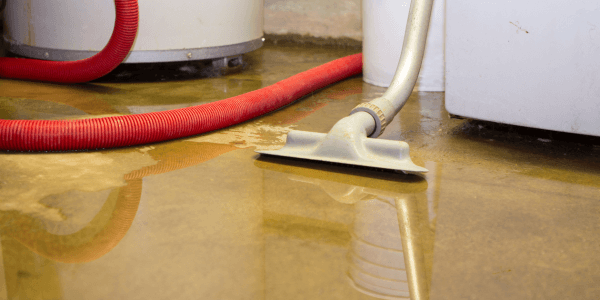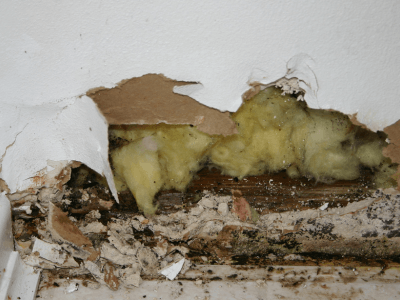
Flooding can disrupt your home, your belongings, and your peace of mind in an instant. The aftermath can feel overwhelming, but with the right approach, you can make the recovery process smoother and safer. At Complete Flood Restoration, we’re here to help you navigate the chaos with professional, compassionate service. Let’s walk through the essential do’s and don’ts of flood cleanup to get your property back on track.
The Do’s of Flood Cleanup
1. Prioritize Safety Above All Else
Floods bring hidden dangers, from contaminated water to structural instability. Start by protecting yourself:
- Wear protective gear: Use gloves, masks, waterproof boots, and safety goggles to minimize exposure to bacteria, chemicals, and debris.
- Turn off electricity: Before entering flood-affected areas, shut off power at the main breaker to prevent electric shocks or fires.
- Check for hazards: Look for gas leaks, unstable structures, or sharp debris before entering your home.
Your safety is our top priority. If you’re unsure whether it’s safe to enter your property, don’t hesitate to call us for professional assistance.
2. Document Everything Before Cleanup
Before you start clearing out water or debris, grab your phone or camera. Documentation is crucial for insurance claims and disaster assistance programs.
- Photograph and video everything: Capture images of damaged walls, furniture, and personal items. Don’t forget to include close-ups and wide-angle shots.
- Create a written inventory: List all damaged items, including their approximate value.
Pro Tip: If navigating insurance feels daunting, our team can guide you through the process to ensure your claims are accurate and comprehensive.

3. Remove Water Quickly
Standing water is a breeding ground for mold and bacteria. The faster you act, the better.
- Pump out excess water: Use a professional-grade pump to remove large volumes of water. For smaller jobs, wet/dry vacuums can help.
- Dry the area thoroughly: Open windows, use fans, and run dehumidifiers to reduce moisture levels.
- Sanitize surfaces: Clean all surfaces with a disinfectant to eliminate bacteria left behind by floodwaters.
Remember, time is of the essence. Mold can begin to grow within 24–48 hours. Call us for 24/7 emergency water extraction if the task feels overwhelming.
4. Inspect for Structural Damage
Floodwater can compromise your home’s structural integrity. Before re-entering, take these precautions:
- Examine walls and foundations: Look for cracks, warping, or uneven flooring.
- Check for hidden damage: Use a flashlight to inspect crawl spaces, basements, and attics.
- Hire a professional: If you spot any signs of instability, contact our licensed experts to assess and repair the damage safely.
5. Know When to Call the Pros
While DIY efforts can handle minor tasks, severe damage requires professional expertise. Our services include:
- Emergency water extraction.
- Sewage cleanup and sanitation.
- Comprehensive mold remediation.
- Content restoration for damaged belongings.
We’ll arrive within 30 minutes to provide fast, reliable help, so you don’t have to face the cleanup alone.
The Don’ts of Flood Cleanup
1. Don’t Enter Without Inspecting First
Flood-damaged homes are fraught with risks. Before stepping inside, check for:
- Unstable structures: Weak floors, walls, or ceilings could collapse.
- Electrical dangers: Live wires can be hidden under water or debris.
- Gas leaks: Listen for hissing sounds and leave immediately if you detect a gas odor.
When in doubt, stay out. Your safety comes first.
2. Avoid Shortcuts
Flood cleanup is not the time to cut corners. Improper methods can cause more harm than good.
- Skip household fans: These can spread moisture instead of drying it out.
- Avoid quick fixes: Temporary solutions, like using space heaters on wet surfaces, can lead to mold or fire hazards.
- Don’t ignore proper disposal: Failing to remove contaminated materials properly can create health risks.
Trust our IICRC-certified professionals equipped with advanced drying techniques and tools to handle the job right.
3. Don’t Keep Everything
It’s tough to let go of cherished items, but some materials are impossible to salvage after a flood.
- Dispose of water-damaged items: This includes mattresses, carpets, and upholstered furniture that have absorbed water.
- Separate salvageable belongings: Let us handle the cleaning and restoration of personal items in our secure, climate-controlled facilities.
- Avoid storing wet items: Store only dry and sanitized items to prevent further contamination.

4. Don’t Ignore Mold Risks
Mold thrives in damp environments and can cause health issues if left untreated.
- Watch for signs: Musty odors, discoloration, or peeling paint are red flags.
- Act fast: Call us immediately for professional mold remediation to prevent further damage.
- Keep monitoring: Even after cleanup, monitor for signs of mold to ensure it doesn’t return.
5. Don’t Assume You’re Covered
Flood insurance varies widely, and many policies don’t include water damage by default.
- Review your policy: Understand your coverage, exclusions, and limitations.
- File claims promptly: Document everything and submit claims as soon as possible. Need help? We’re here to assist you every step of the way.
Practical Tips for Flood Preparedness

While floods are unpredictable, preparation can save time, money, and stress. Here’s how:
- Install barriers: Flood barriers and waterproof foundations can minimize damage.
- Stock an emergency kit: Include non-perishable food, bottled water, flashlights, batteries, and first-aid supplies.
- Have a plan: Know your evacuation routes and keep important documents in a waterproof container.
- Elevate utilities: Raise electrical panels, appliances, and HVAC systems above potential flood levels.
- Save our number: Complete Flood Restoration is just a call away for immediate help.
Why Choose Complete Flood Restoration?
Recovering from a flood is tough, but you don’t have to do it alone. As a family-owned business serving San Antonio and surrounding areas, we bring compassion, expertise, and rapid response times to every job. Our team is dedicated to helping you restore not just your property but also your peace of mind.
Call us today for a free estimate, and let us handle the heavy lifting. We’re here to help you recover, rebuild, and move forward—stronger than ever.
